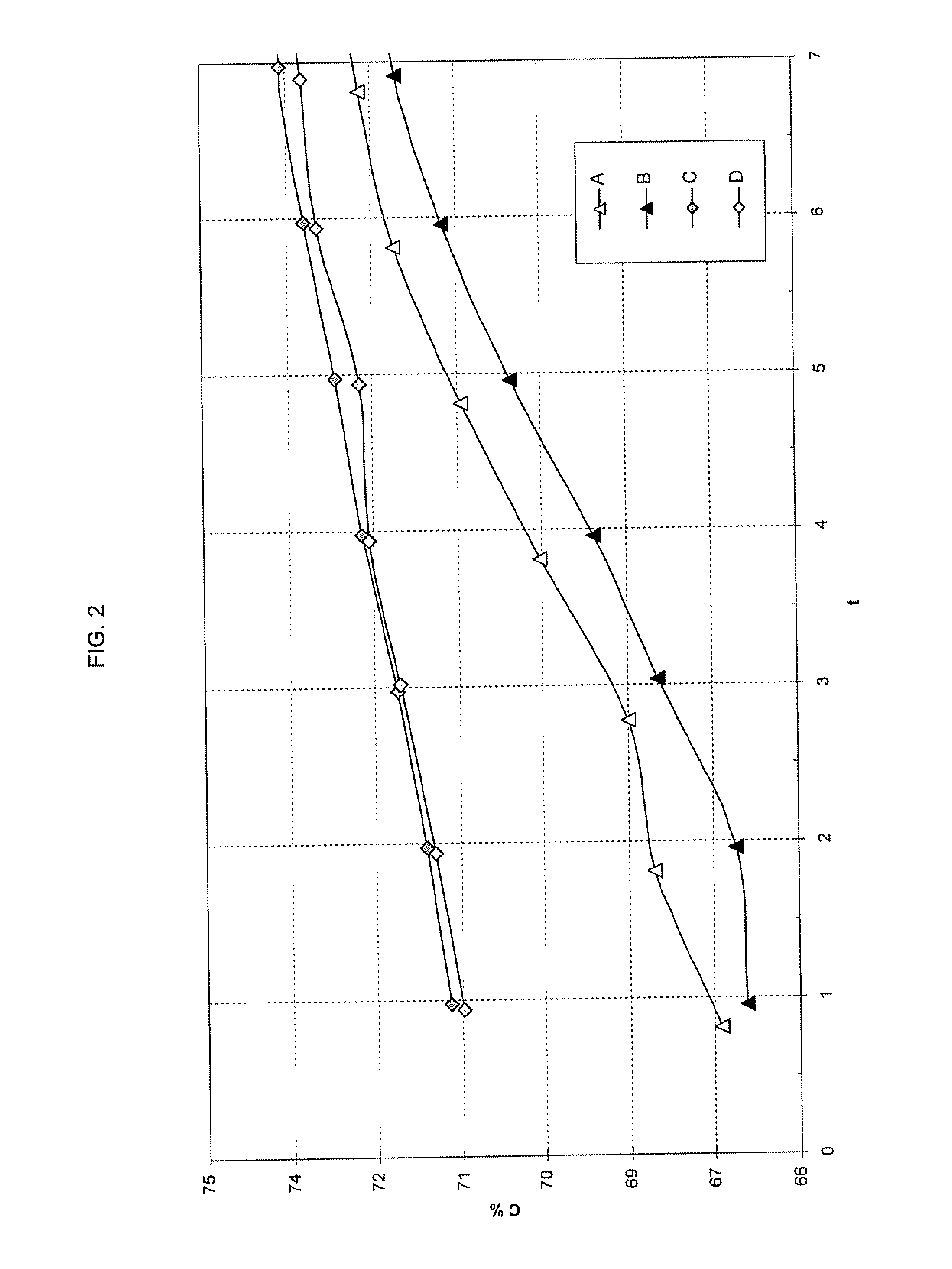Catalyst, its preparation and use
a catalyst and catalyst technology, applied in the field of catalysts, can solve the problems of affecting catalyst performance, affecting catalyst performance, affecting catalyst performance,
- Summary
- Abstract
- Description
- Claims
- Application Information
AI Technical Summary
Problems solved by technology
Method used
Image
Examples
example 1
[0050]Doped regenerator iron oxide was made by adding an aqueous solution of ammonium dimolybdate containing 1.45 moles of molybdenum per liter to a waste pickle liquor solution that contained approximately 3.7 moles of iron per liter. Most of the iron was present as FeCl2. The waste pickle liquor solution contained approximately 150 g / L hydrochloric acid. The waste pickle liquor solution was added to a spray roaster at a rate of about 7.5 m3 / h, and the ammonium dimolybdate solution addition rate was adjusted to achieve the desired concentration of molybdenum in the doped regenerator iron oxide. The spray roaster was operated at typical spray roasting conditions known to those skilled in the art. The properties of the doped regenerator iron oxide produced are shown in Table 1.
example 2
[0051]Regenerator iron oxide was made by the method of Example 1, except that ammonium dimolybdate was not added to the waste pickle liquor solution. The properties of the regenerator iron oxide produced are shown in Table 1.
example 3
[0052]A catalyst was prepared using the regenerator iron oxide of Example 2. The following ingredients were combined: 900 g regenerator iron oxide and 100 g yellow iron oxide with sufficient potassium carbonate, cerium carbonate, molybdenum trioxide, and calcium carbonate to give the composition shown in Table 2. Water (about 10 wt %, relative to the weight of the dry mixture) was added to form a paste, and the paste was extruded to form 3 mm diameter cylinders cut into 6 mm lengths. The pellets were dried in air at 170° C. for 15 minutes and subsequently calcined in air at 825° C. for 1 hour. pore diameters are as measured by mercury intrusion according to ASTM D4282-92, to an absolute pressure of 6000 psia (4.2×107 Pa) using a Micromeretics Autopore 9420 model; (130° contact angle, mercury with a surface tension of 0.473 N / m). As used herein, median pore diameter is defined as the pore diameter at which 50% of the mercury intrusion volume is reached.
[0053]The surface area of the c...
PUM
| Property | Measurement | Unit |
|---|---|---|
| Temperature | aaaaa | aaaaa |
| Temperature | aaaaa | aaaaa |
| Temperature | aaaaa | aaaaa |
Abstract
Description
Claims
Application Information
 Login to View More
Login to View More - R&D
- Intellectual Property
- Life Sciences
- Materials
- Tech Scout
- Unparalleled Data Quality
- Higher Quality Content
- 60% Fewer Hallucinations
Browse by: Latest US Patents, China's latest patents, Technical Efficacy Thesaurus, Application Domain, Technology Topic, Popular Technical Reports.
© 2025 PatSnap. All rights reserved.Legal|Privacy policy|Modern Slavery Act Transparency Statement|Sitemap|About US| Contact US: help@patsnap.com


